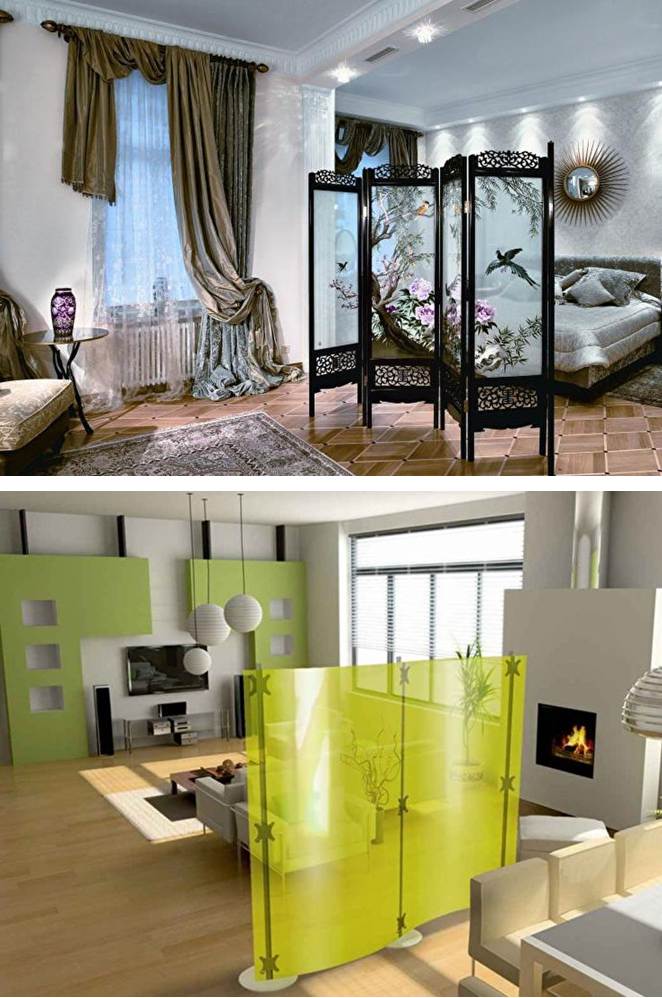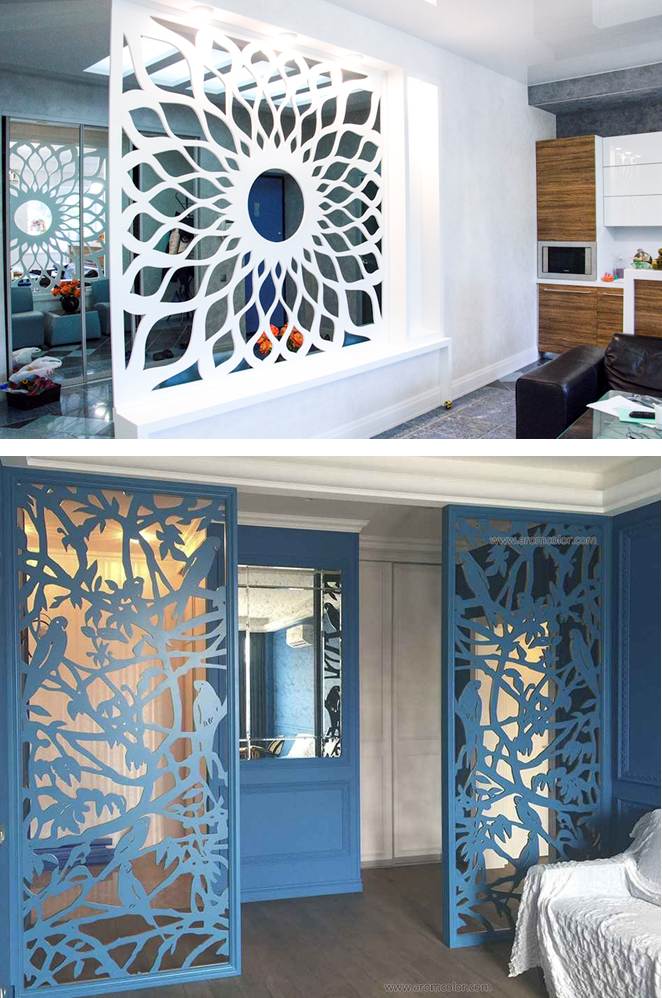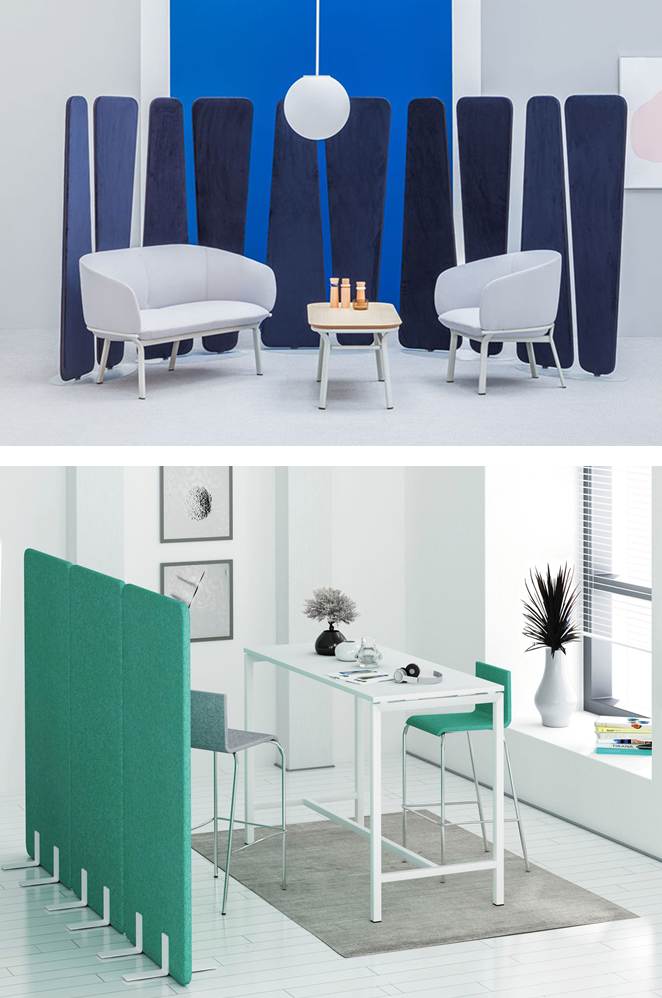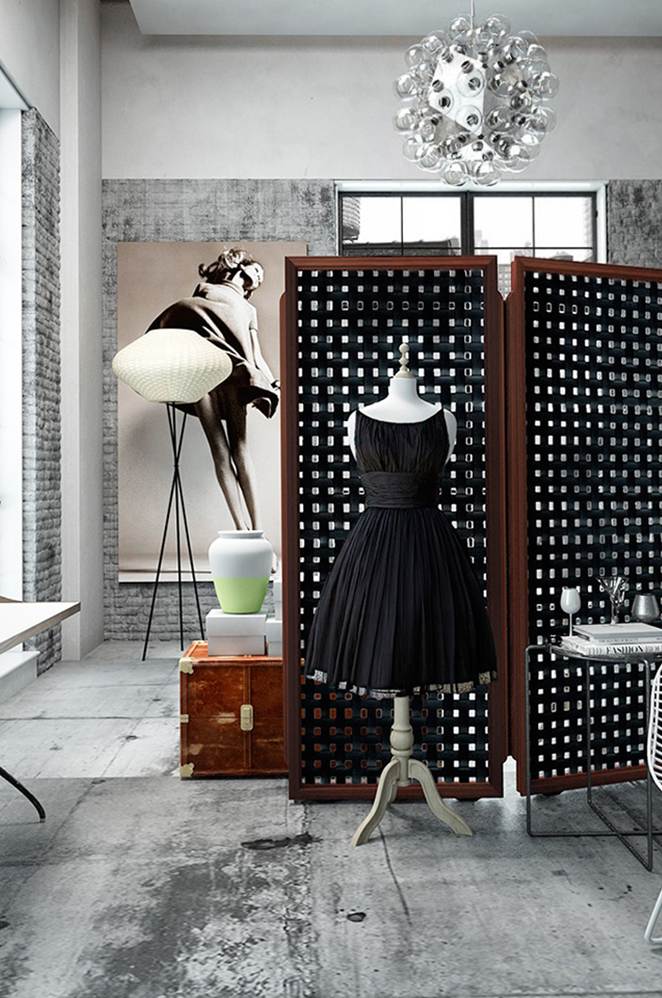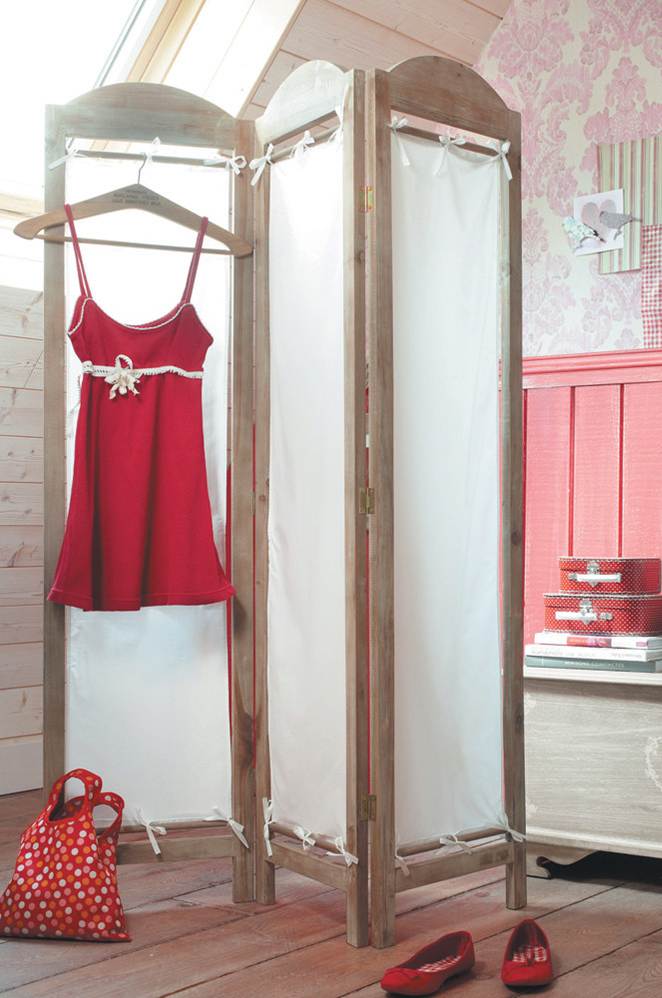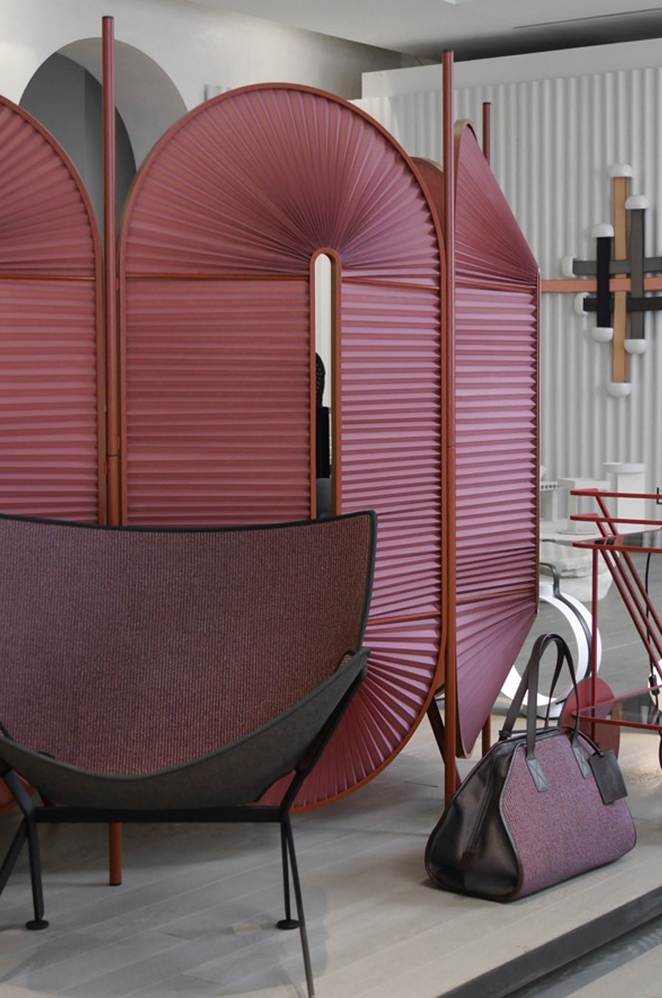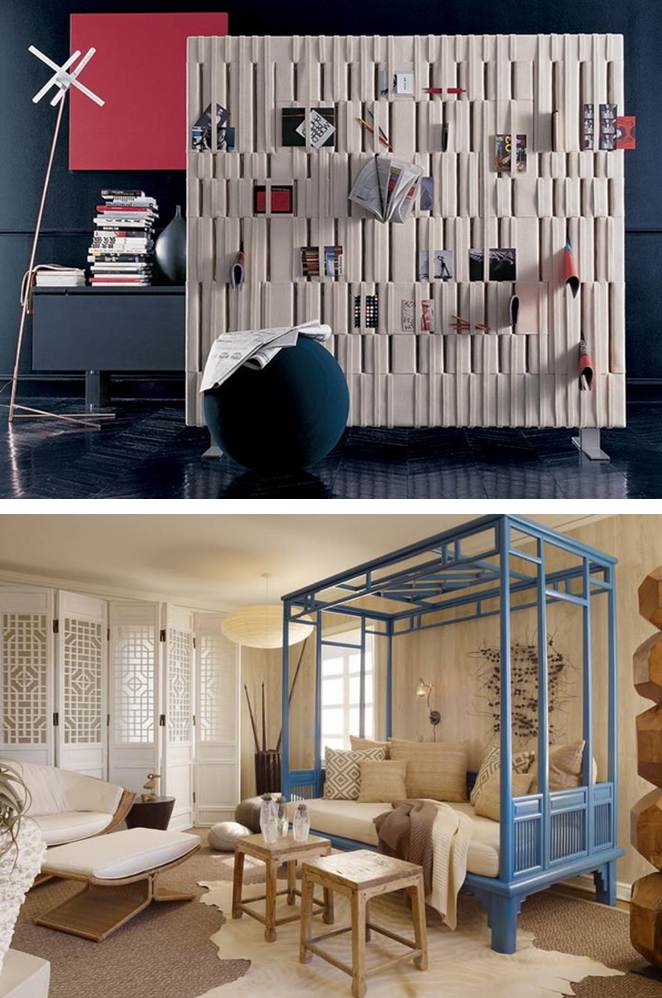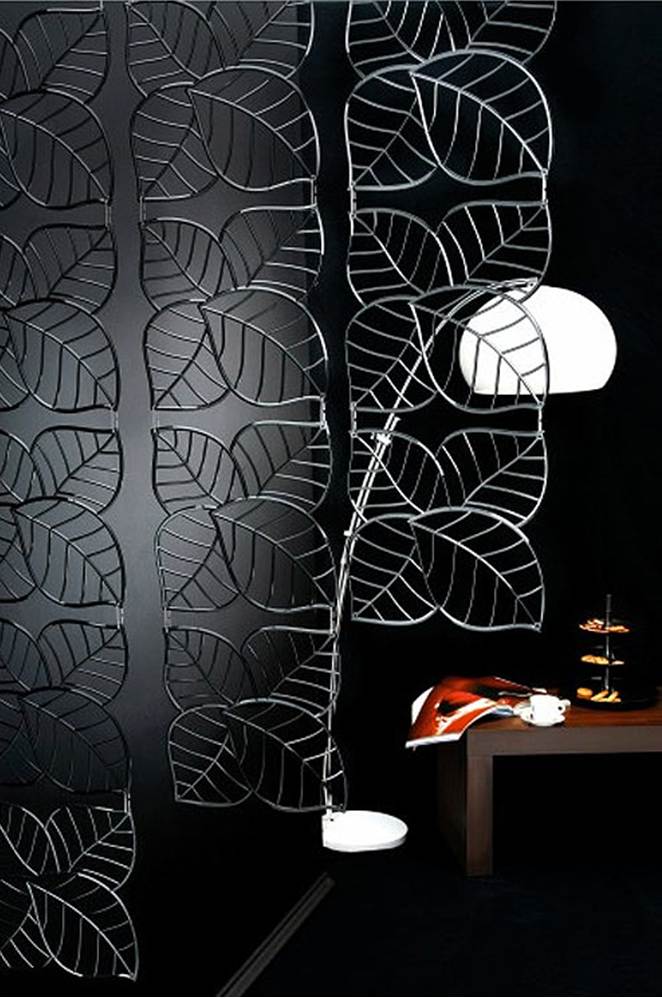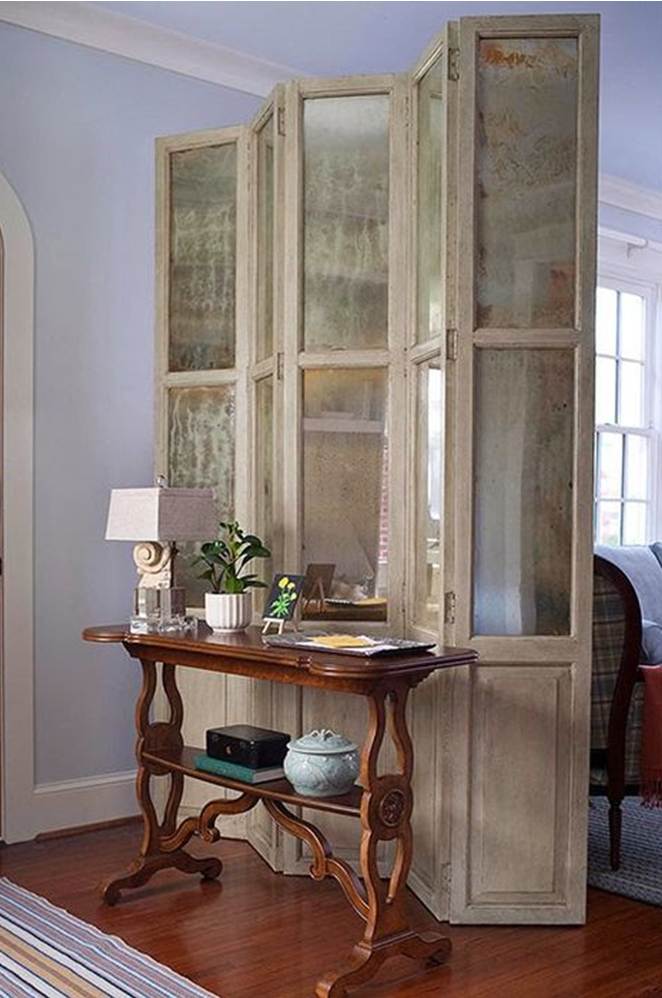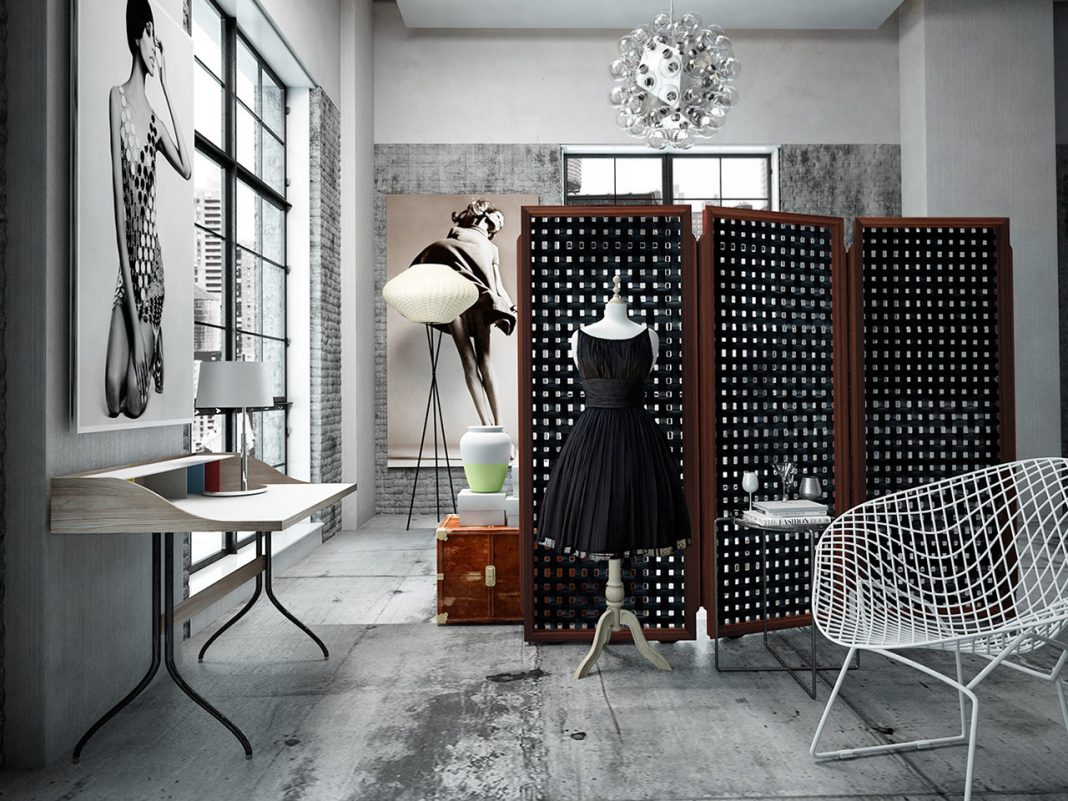There are many types of portable room dividers that can add privacy, style and functionality to your open-concept living space. They are great for those who need a quick solution to a privacy problem, because they are light-weight and portable and you can place them anywhere you need.
Portable solid room dividers to separate your open-concept layout
Some room partitions attach to the ceiling, floor, or walls with light hardware. Other dividers are even easier to install with eyehooks screwed into the ceiling.
Folding screens
Folding or accordion screens are one of the easiest ways to separate spaces, especially for rented homes, as they are free-standing and not attached to the floor or wall. There’s no installation of any kind required – just open and place; with the added advantage of being able to move them around wherever and whenever you please.
Folding dividers require no installation at all – unfold them and you are ready to go. However, keep in mind that folding dividers tend to have a wider footprint, placed as they are in a zig-zag fashion, and may not be ideal for small spaces. If space is limited, this type of divider may not be for you.
Also, there some safety issues are involved: with the slightest gust of wind or a bump, folding dividers can easily fall over. In contrast, fixed or hanging dividers might be only one or two inches thick.
Chinese folding screens
The folding room screens were found in China in the 7th century where they were mainly used by royalty. They were very heavy and ornate, and were not moved around. In the 8th century, the Japanese began using lighter, more portable room dividers for tea ceremonies, religious events and outdoor processions. European travelers developed their own version of Asian screen dividers using wood, leather, silk, mirrors and decoupage.
Modular solid room dividers
Hanging room partitions are semi-permanent fixtures that are suspended from the ceiling. Depending on the material you are using, they can either be immovable, or can be pulled back, slid to the side, rolled up and re-arranged at will or left as is. Unlike foldable screens, they reach all the way from floor to ceiling, and can extend from one end of the room to the other.

